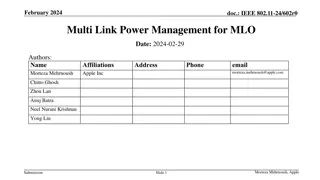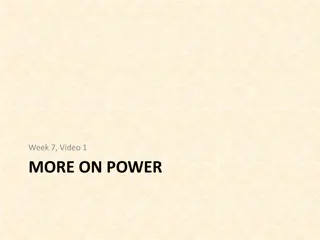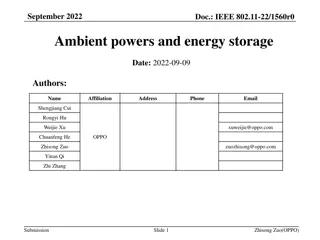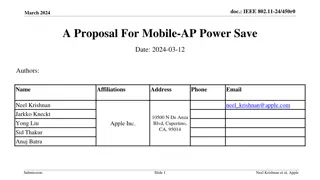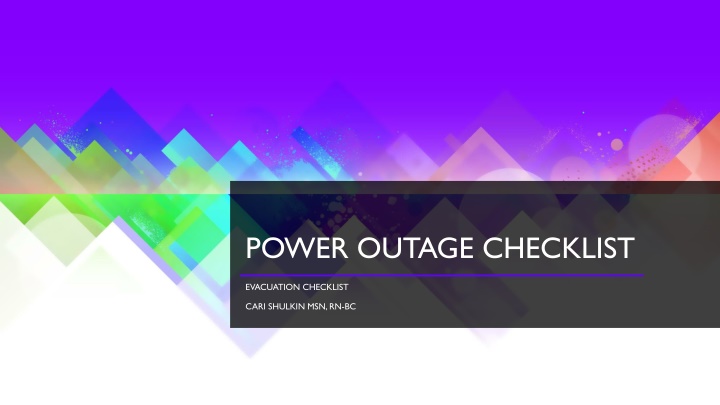
Emergency Preparedness Tips for Power Outages and Evacuations
Stay ready for power outages and emergencies with these helpful checklists and tips from Cari Shulkin, MSN, RN-BC. Learn how to handle perishable foods, save medications, secure your home, and prepare for evacuations. Be Red Cross ready, know what to do when a storm is coming, and ensure your safety during power outages with essential supplies and precautions.
Download Presentation

Please find below an Image/Link to download the presentation.
The content on the website is provided AS IS for your information and personal use only. It may not be sold, licensed, or shared on other websites without obtaining consent from the author. If you encounter any issues during the download, it is possible that the publisher has removed the file from their server.
You are allowed to download the files provided on this website for personal or commercial use, subject to the condition that they are used lawfully. All files are the property of their respective owners.
The content on the website is provided AS IS for your information and personal use only. It may not be sold, licensed, or shared on other websites without obtaining consent from the author.
E N D
Presentation Transcript
POWER OUTAGE CHECKLIST EVACUATION CHECKLIST CARI SHULKIN MSN, RN-BC
BE RED CROSS READY Always better to be prepared for an emergency Perishable food Supplies Medication Your car Cash
YOU KNOW A STORM IS COMING WHAT DO YOU DO? Do you have a bag of ice in your freezer Charge up all your chargers Fill up your gas tank in your car
If a power outage is 2 hours or less, you need not be concerned about perishable foods. Frozen foods will stay frozen with the door closed for 48 hours if its full and door remains closed. 24 hours if it is half full. HOW LONG IS YOUR POWER OUT Refrigerator food will stay good for if the door stays closed for 4 hours Throw away any food that has been exposed to temperatures 40 F (4 C) for 2 hours or more or that has an unusual odor, color or texture.!
When in doubt, throw it out! FOOD SAFETY
Large cooler HOW TO SAVE PERISHABLE FOODS Bagged ice or dry ice Digital thermometer
Flashlight/lantern Chargers for phone, laptop Extra batteries OTHER SUPPLIES Entertainment- deck of cards, puzzle, etc Medications- one weeks supply Water- one gallon per person, per day (3 day supply for evacuation, 2-week supply for home evacuation
EVACUATION Battery-powered or hand-crank radio (NOAA Weather Radio) Extra batteries First aid kit Medications (7-day supply) and medical items Multi-purpose tool Sanitation and personal hygiene items Copies of personal documents (medication list and pertinent medical information, deed/lease to home, birth certificates, insurance policies) Cell phone with chargers Family and emergency contact information Extra cash
Turn off and unplug unnecessary equipment and electronics When power comes back on, surges may can damage to equipment and electronics ELECTRICAL EQUIPMENT The primary hazards to avoid when using alternate sources for electricity, heating or cooking are carbon monoxide poisoning, electric shock and fire.
BE AN EAGLE SCOUT Always be prepared Any questions?




